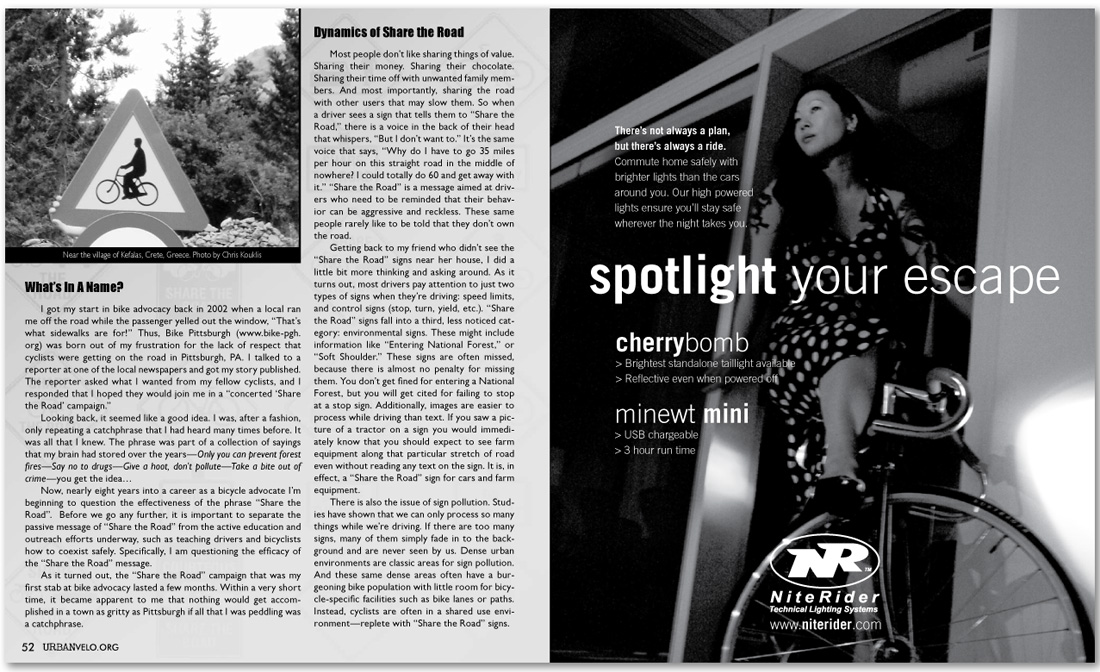

|
||||
What’s In A Name? Looking back, it seemed like a good idea. I was, after a fashion, only repeating a catchphrase that I had heard many times before. It was all that I knew. The phrase was part of a collection of sayings that my brain had stored over the years—Only you can prevent forest fires—Say no to drugs—Give a hoot, don’t pollute—Take a bite out of crime—you get the idea… Now, nearly eight years into a career as a bicycle advocate I’m beginning to question the effectiveness of the phrase “Share the Road”. Before we go any further, it is important to separate the passive message of “Share the Road” from the active education and outreach efforts underway, such as teaching drivers and bicyclists how to coexist safely. Specifically, I am questioning the efficacy of the “Share the Road” message. As it turned out, the “Share the Road” campaign that was my first stab at bike advocacy lasted a few months. Within a very short time, it became apparent to me that nothing would get accomplished in a town as gritty as Pittsburgh if all that I was peddling was a catchphrase. Dynamics of Share the Road Getting back to my friend who didn’t see the “Share the Road” signs near her house, I did a little bit more thinking and asking around. As it turns out, most drivers pay attention to just two types of signs when they’re driving: speed limits, and control signs (stop, turn, yield, etc.). “Share the Road” signs fall into a third, less noticed category: environmental signs. These might include information like “Entering National Forest,” or “Soft Shoulder.” These signs are often missed, because there is almost no penalty for missing them. You don’t get fined for entering a National Forest, but you will get cited for failing to stop at a stop sign. Additionally, images are easier to process while driving than text. If you saw a picture of a tractor on a sign you would immediately know that you should expect to see farm equipment along that particular stretch of road even without reading any text on the sign. It is, in effect, a “Share the Road” sign for cars and farm equipment. There is also the issue of sign pollution. Studies have shown that we can only process so many things while we’re driving. If there are too many signs, many of them simply fade in to the background and are never seen by us. Dense urban environments are classic areas for sign pollution. And these same dense areas often have a burgeoning bike population with little room for bicycle-specific facilities such as bike lanes or paths. Instead, cyclists are often in a shared use environment—replete with “Share the Road” signs. |
|
|